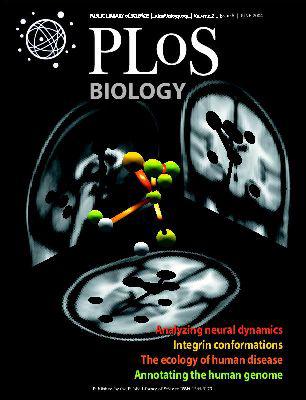Functional geometry of auditory cortical resting state networks derived from intracranial electrophysiology.
IF 7.8
1区 生物学
Q1 BIOCHEMISTRY & MOLECULAR BIOLOGY
引用次数: 2
Abstract
Understanding central auditory processing critically depends on defining underlying auditory cortical networks and their relationship to the rest of the brain. We addressed these questions using resting state functional connectivity derived from human intracranial electroencephalography. Mapping recording sites into a low-dimensional space where proximity represents functional similarity revealed a hierarchical organization. At fine scale, a group of auditory cortical regions excluded several higher order auditory areas and segregated maximally from prefrontal cortex. On mesoscale, the proximity of limbic structures to auditory cortex suggested a limbic stream that parallels the classically described ventral and dorsal auditory processing streams. Identities of global hubs in anterior temporal and cingulate cortex depended on frequency band, consistent with diverse roles in semantic and cognitive processing. On a macro scale, observed hemispheric asymmetries were not specific for speech and language networks. This approach can be applied to multivariate brain data with respect to development, behavior, and disorders. Blurb We describe the organization of human neocortex on multiple spatial scalesbased on resting state intracranial electrophysiology. We focus on cortical regions involved in auditory processing and examine inter-regional hierarchical relationships, network topology, and hemispheric lateralization. This work introduces a powerful analytical tool to examine mechanisms of altered arousal states, brain development, and neuropsychiatric disorders.



源自颅内电生理学的听觉皮层静息状态网络的功能几何结构。
理解中枢听觉处理至关重要地取决于定义潜在的听觉皮层网络及其与大脑其他部分的关系。我们使用来自人类颅内脑电图的静息状态功能连接来解决这些问题。将记录地点映射到一个低维空间中,在该空间中,邻近性表示功能相似性,从而揭示了一个层次结构。在精细尺度上,一组听觉皮层区域排除了几个高级听觉区域,并与前额叶皮层最大程度地分离。在中尺度上,边缘结构与听觉皮层的接近表明边缘流与经典描述的腹侧和背侧听觉处理流相似。颞前皮层和扣带皮层全局中枢的身份取决于频带,与语义和认知处理中的不同作用一致。在宏观尺度上,观察到的半球不对称并不是语音和语言网络特有的。这种方法可以应用于关于发育、行为和障碍的多变量大脑数据。
本文章由计算机程序翻译,如有差异,请以英文原文为准。
求助全文
约1分钟内获得全文
求助全文
来源期刊

PLoS Biology
生物-生化与分子生物学
CiteScore
14.40
自引率
2.00%
发文量
359
审稿时长
3 months
期刊介绍:
PLOS Biology is an open-access, peer-reviewed general biology journal published by PLOS, a nonprofit organization of scientists and physicians dedicated to making the world's scientific and medical literature freely accessible. The journal publishes new articles online weekly, with issues compiled and published monthly.
ISSN Numbers:
eISSN: 1545-7885
ISSN: 1544-9173
 求助内容:
求助内容: 应助结果提醒方式:
应助结果提醒方式:


